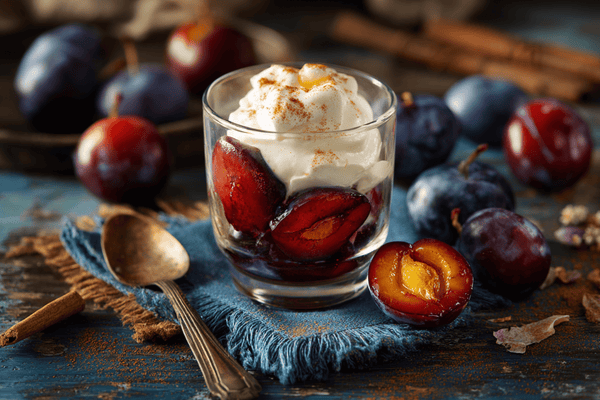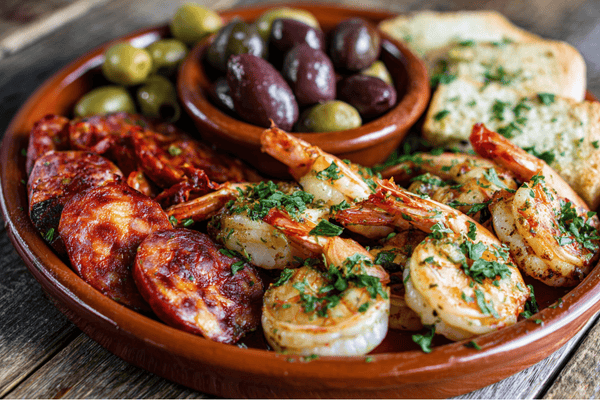
In recent years, more and more people have made the decision to go for the health benefits of a vegan or vegetarian lifestyle. There are lots of foods out there that people associate with these diets but none more so than tofu. However, this bean curd has got itself a bit of a reputation as a flavourless food but much of this is to do with how it’s prepared.
If you’ve been thinking about including soy products and tofu in your diet but aren’t really sure where to start or what to expect then this guide is for you. We’ll be talking all about tofu telling you what it actually is, the different types, how to cook it and how to make it taste good.
Table of contents
- What Is Tofu?
- What Are the Different Types of Tofu?
- Block Tofu
- Soft Block Tofu
- Medium Block Tofu
- Firm Block Tofu
- Extra Firm Block Tofu
- Silken Tofu
- Soft Silken Tofu
- Firm Silken Tofu
- Fresh Silken Tofu
- What’s the Best Way to Cook Tofu?
- How Can You Make Tofu Taste Good?
- Marinating Tofu
- Freeze It!
- Get a Crispy Texture
- Final Thoughts
What Is Tofu?

Tofu is made from soybeans. The beans are ground up and mixed with water to make a milk-like product which is then coagulated with a setting agent. After this, the tofu gets pressed and this can be done in several stages. The number of times the tofu is pressed determines the firmness of it so there are different types but I’ll discuss these in more detail later on. Note that the amount of water used can also affect the texture of the tofu.
Tofu is a favourite food for people who follow a vegetarian or vegan diet but even for meat eaters, it’s still worth including in your diet purely because of the health benefits of tofu. For starters, tofu is packed with protein, especially where there is a particularly high soy content. Some tofu products have more than 25% soy which makes them incredibly high in soy protein as well as essential amino acids, omega-3 fatty acids and fibre. Soy isoflavones also have benefits for cardiovascular health.
If you need to follow a gluten-free diet then tofu is perfect as it’s totally gluten-free as well as being very low in calories. This makes it a popular choice for people who are looking to maintain a healthy weight or shift a few pounds.
It’s also worth mentioning that tofu is bursting with good fats which makes it brilliant for heart health and lowering cholesterol. There has been evidence to suggest that tofu could contribute to lowering your risk of cardiovascular disease.
What Are the Different Types of Tofu?
If you thought that the term tofu referred to just one type of ingredient, think again. There’s a surprising amount of versatility between tofu types and this affects how they taste and what you can do with them. Let’s take a look at the different types.
Block Tofu

If you order tofu in a restaurant, you’ll more than likely be given block tofu. What’s more, this is the most commonly found type of tofu when buying in supermarkets. When the tofu is being made, the curds have a very fluffy texture which explains why it’s sometimes called cotton tofu.
This type of tofu comes packaged in a block and is surrounded by water in small plastic trays. This is ideal when it comes to storing the tofu and has been the go-to packaging solution since the '60s.
Soft Block Tofu
Out of all the types of block tofu, soft block tofu is pressed the least which allows the curds to blend immaculately with the whey making for a much smoother consistency. However, there is a degree of texture once it’s broken and many people compare it to the consistency of jelly.
Soft block tofu has a very mild flavour that’s quite milky and there’s a certain degree of sweetness. This, coupled with the consistency means it is often used when making dessert dishes. That said, it’s just as good when making a savoury dish so it’s versatile.
However, soft tofu has a much higher water content than some other types of block tofu and that means that it isn’t really suitable for shallow frying as the food will likely spit a lot. However, it is good for boiling. Most people prefer this type of tofu raw; just pat it dry before serving.
Medium Block Tofu
Compared to soft-block tofu, you’ll notice that the texture of medium-block tofu is much rougher. You can still see the curds and when you handle it, you’ll notice that it cracks.
Sometimes, medium block tofu can look a little droopy and that’s down to the medium water content. If you’re boiling or braising then we’d recommend using this type of tofu. However, we wouldn’t suggest it for more vigorous cooking methods like stir-frying as there’s a good chance it’ll just break up during the process.
If you need to freeze your tofu then medium block tofu is one of the best options for this storage method.
Firm Block Tofu
For beginners, firm block tofu is always what I would recommend. You can’t really go wrong with it and you’ll find that it’s suitable for pretty much any savoury recipe. The curds are tightly packed giving the tofu a very solid appearance and just a small amount of give.
You’ll notice that the tofu starts to become a little more rubbery as you cook it and that’s totally normal. The good thing about this is that it means it’s much less likely to break up compared to softer tofu so it’ll be ideal for stir-frying.
Extra Firm Block Tofu
Out of all the block tofus, extra firm tofu is the most compact. Plus it’s a lot chewier and dense so if you’re making a hearty comfort food dish then it’s absolutely wonderful. What’s more, a lot of people go for this version of tofu when looking for an alternative to paneer when making Indian dishes.
Silken Tofu

You’ll also see a lot of silken tofu in restaurants and shops, albeit not as often as block tofu but it’s still very common. The way this tofu is made is similar to block tofu with the difference that the milk is not curdled. What’s more, the tofu is not pressed so a lot more moisture remains.
Using this method means that no curds form during the process and the tofu has a much more silky and smooth appearance. It’s a lot more delicate than block tofu so you need to be really careful when working with it otherwise it may just break apart.
Soft Silken Tofu
Soft silken tofu is very delicate and incredibly heavy. If it isn’t handled correctly, it will literally fall apart and so we’d recommend treating it as delicately as you would something like a poached egg. However, if you’re looking for something to act as a replacement for yoghurt or tofu that can be used to make sauces then this is the perfect option.
Firm Silken Tofu
When they make firm silken tofu, the soy milk is far denser than when making firm block tofu or soft silken tofu. Because of this, they don’t need to add as much water so the end result is much easier to handle and far less delicate.It’s a lot more versatile than soft silken tofu and can be used for things like battering, boiling and frying without the risk of it crumbling.
It is also possible to buy extra firm silken tofu and while they have different names, this and firm silken tofu are pretty much the same thing.
Fresh Silken Tofu
Even more delicate than soft silken tofu, fresh silken tofu, which is sometimes called custard tofu, is prepared in a very minimalistic manner. There’s actually some skill required to make this type of tofu so we’d usually recommend buying it from a local manufacturer with some good knowledge. We’ve often found that mass-produced fresh silken tofu is pretty gross tasting or doesn’t have much taste at all.However, when you buy locally, it’s really easy to get your hands on a very light and sweet version of this tofu that works really well in desserts.
We would also recommend only buying this type of tofu on the day you need it. When it comes to eating soy, the fresher it is, the better it tastes. Not to mention that this type of tofu can go bad very quickly.
What’s the Best Way to Cook Tofu?

The best way to cook tofu really depends on the type of tofu that you are using. Of course, you’re free to experiment and find ways that suit your taste but in general, we’d follow these tips if you are a beginner.
If you have firm tofu then you’ll do well to either roast, grill or fry it. However, regardless of the cooking method you have chosen, we can’t stress enough the importance of making sure the tofu is fully drained and pressed before you begin. If you don’t do this then a lot of water will remain and this makes it almost impossible for the tofu to soak up any sauce.
You can drain and dry it using kitchen towel and something as simple as a weighty chopping board can be used to press it. You don’t need any special equipment.
If you choose to fry tofu, make sure that you opt for a version that isn’t going to fall apart easily. Cut it into slices or cubes (whichever you prefer) and then add it to very hot oil. The same can be said when roasting; make sure that the tofu is sliced and then toss it in oil before putting it into the oven. On medium to hot heat, you should only need to cook it for around thirty minutes or until it turns golden brown.
When it comes to cooking silken tofu, the most important thing is to remember to be as delicate as possible because it will break up if you’re too rough.
A lot of people like to smoke their tofu using a stovetop smoker and extra firm block tofu is ideal for this cooking method. You don’t need to add any oil or fat and, as long as it is well-drained and pressed, it’ll turn out perfectly. Plus, it’s a pretty quick method that’ll be done in as little as half an hour.
How Can You Make Tofu Taste Good?
We’ve heard a lot of people talking about the fact that tofu doesn’t taste good. In actual fact, it doesn’t really have a taste at all. If you’ve ever eaten it and winced at the taste, it’s probably got a lot more to do with how it’s been prepared. In any case, we all want our food to taste good and there’s no exception when we’re talking about tofu. So, how do you make tofu taste good?
Marinating Tofu

Marinating tofu is one of the best ways to make it taste good and this applies mainly to firm or extra firm tofu. A lot of people worry when I mention making a marinade but it doesn’t have to be anything overly complicated. In fact, the best ones are usually the most simple.
Something like rice vinegar mixed with soy sauce, garlic and coconut sugar can really make a delicious tofu and there’s hardly anything to it. You’ll want to leave the tofu cubes marinating for around thirty minutes. However, it’s best if you can leave them overnight; just make sure to keep them in the fridge.
One important thing to keep in mind when marinating tofu is that you should never add anything oily to the mix. The reason for this is that tofu doesn’t absorb oil well so all you’ll get is a slimy coating over your food; that’s not what any of us want - yuck!
Freeze It!

If you order tofu in a restaurant, you’ll have noticed that it has a very chewy and spongy texture. Some people like this, others don’t but if you’re one of those that enjoys it then the best way to achieve this is by freezing the tofu.
What’s more, once you have thawed the tofu, it does a much better job of soaking up any marinade or sauce so you’ll end up with a much more flavoursome dish.
The best way to freeze tofu is simply to drain it and then pop it into a freezer bag or container. You can leave it here until you need to use it but make sure that you freeze it for at least eight hours for the best results.
Get a Crispy Texture

We love crispy tofu; there’s just something about it but it wasn’t until we learned the proper technique that we were able to create this at home. The secret ingredient? Cornstarch!
You’ve got two options in terms of preparation; you can crumble the tofu and mix some cornstarch in with it or cube it and put a layer of cornstarch around the cubes. Either method works very well but it all comes down to personal preference.
Final Thoughts

Whether you’re looking to involve healthier foods in your diet or are opting for a vegan or vegetarian diet, soy foods are going to play a role. However, there’s a lot of mystery around eating tofu when there really doesn’t need to be.
It’s not a terrible-tasting, rubbery food that’s hard to stomach. In fact, when it’s prepared properly, tofu is one of the most delicious things on the planet. As well as good preparation, it’s also really important to choose the right type of tofu. Since they all have different textures, you need to choose something that’s going to work well for your dish.
So, if you’re a tofu newbie, don’t despair, now you know everything there is to know about this soy-based food. All that’s left to do is get cooking!


